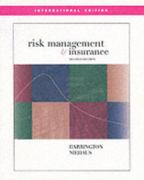Question
(20 points) Consider the chicken game detailed below repeated three times. Each player's total payoff in the repeated game is the undiscounted sum of the
(20 points) Consider the chicken game detailed below repeated three times. Each player's total payoff in the repeated game is the undiscounted sum of the payoffs in the three rounds.
Player 2
Player 1
Swerve Keep going
Swerve
2, 2
3, 1
Keep going
1, 3
0, 0
Also consider the following strategy, where S stands for "Swerve" and K stands for "Keep going":
Play (S, S) in the first round.
Play the mixed strategy Nash equilibrium of the chicken game in the second and
third rounds if (S, S) or (K, K) was played in the first round.
Play (S, K) in the second and third rounds if (K, S) was played in the first round.
Play (K, S) in the second and third rounds if (S, K) was played in the first round.
(a) Prove that this strategy is a subgame perfect equilibrium. (10 points)
(b) If the chicken game is repeated only twice, is there a subgame perfect equilibrium in which (S, S) is played in the first round? Please explain your answer. (10 points)
Q5 (20 points) Consider the chicken game in Q4 repeated infinitely many times. Assume that the discount factor is as high as necessary (as long as it is smaller than 1), find a subgame perfect equilibrium that sustains payoffs (2, 2) in each period. In your answer, please clearly state the equilibrium strategy and the lowest discount factor for it to be a subgame perfect equilibrium.
Step by Step Solution
There are 3 Steps involved in it
Step: 1

Get Instant Access to Expert-Tailored Solutions
See step-by-step solutions with expert insights and AI powered tools for academic success
Step: 2

Step: 3

Ace Your Homework with AI
Get the answers you need in no time with our AI-driven, step-by-step assistance
Get Started


